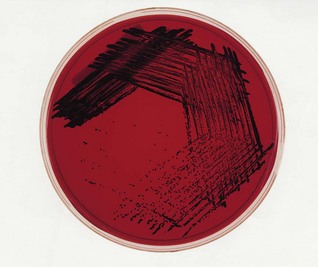Chapter 17 Bacteroides, Tannerella, Porphyromonas and Prevotella
The genera described in this chapter are obligately anaerobic, short Gram-negative rods or coccobacilli. Historically, only the Bacteroides genus was known, but the application of new taxonomic techniques has resulted in the definition of three additional genera: Tannerella, Porphyromonas and Prevotella. Together they comprise a substantial proportion of the microflora of the dental plaque, intestine and the female genital tract (Table 17.1):
Table 17.1 Anaerobic Gram-negative bacilli of clinical interest
| Organism | Main colonization sites |
|---|---|
| Bacteroides | |
| B. fragilis group | Colon |
| B. fragilis | |
| B. ovatus | |
| B. vulgatus | |
| B. distasonis | |
| B. capillosus | Colon, oropharynx |
| B. ureolyticus | Oropharynx, intestine, genitourinary tract |
| Tannerella | |
| T. forsythia | Oropharynx |
| Porphyromonas | |
| P. gingivalis | Oropharynx |
| P. endodontalis | Oropharynx |
| Prevotella | |
| P. intermedia | Oropharynx |
| P. nigrescens | Oropharynx |
| P. melaninogenica | Oropharynx |
| P. loescheii | Oropharynx |
| P. pallens | Vagina, oropharynx |
| P. corporis | Vagina, oropharynx |
Collectively, Tannerella, Porphyromonas and Prevotella species are referred to as black-pigmented anaerobes, as some organisms from these genera form a characteristic brown or black pigment on blood agar (Fig. 17.1).
Stay updated, free dental videos. Join our Telegram channel

VIDEdental - Online dental courses



